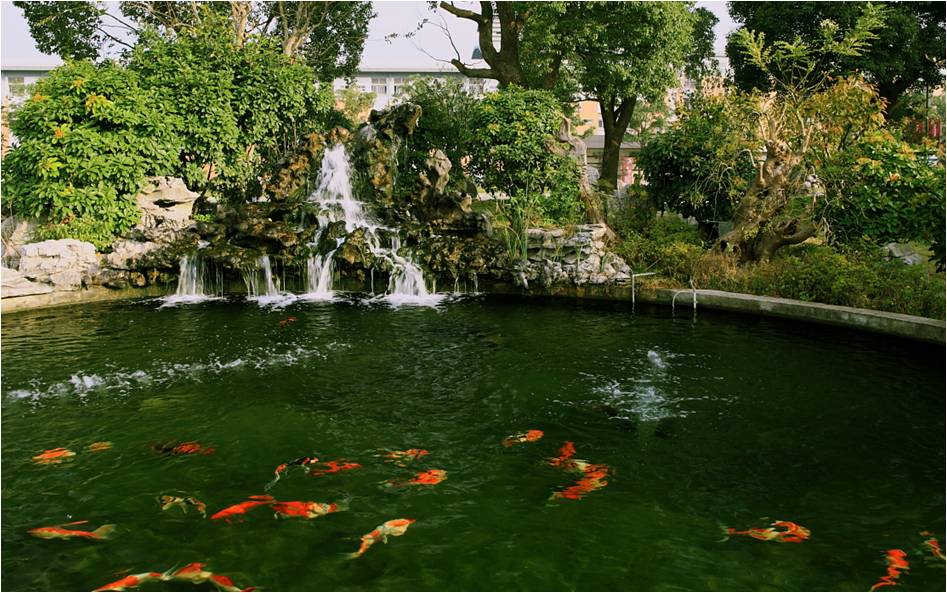The Joy of Koi
Three thousand years ago, Zhuangzi and Huizi debated: "You are not a fish, how can you know the joy of fish?" Yet standing here, watching the koi glide gracefully through the pond, we can realize that sensing their happiness is not so difficult. Like observing a person’s demeanor, if the fish appear plump, vibrant in color, and swift in movement, they are likely content. Their serene dance in the water, in turn, brings viewers a tranquil escape from worries, infusing us with quiet delight.
This pond is home to renowned koi varieties such as Kohaku (red and white), Taisho Sanke, Showa Sanke, Tancho (red-crowned), and Bekko, along with large grass carp lingering near the bottom. Adorned in patterns as intricate as brocade, koi swim with noble elegance, their forms so exquisite they are hailed as "living gems of the water" and "swimming artworks."
In Chinese culture, koi carry profound symbolism. The ancient legend of "the carp leaping through the Dragon Gate" represents ambition and ascension to greatness, much like a person achieving fame or high office. Historically, koi were reserved for the ponds of wealthy families, revered as emblems of fortune, prosperity, and happiness. Their presence here continues this legacy, blending natural beauty with timeless cultural resonance.



